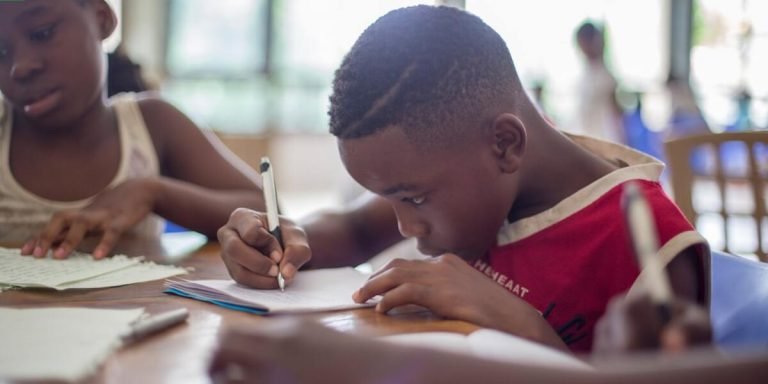Reading Comprehension Disability: Understanding and Navigating Its Challenges in Childhood Education
Understanding a child’s reading comprehension disability can often seem like navigating through a dense fog. The path to enhanced learning methodology is shrouded with questions, doubts and challenges. But at the essence of this journey is comprehending what constitutes reading comprehension disabilities and addressing them effectively in childhood education.
To ease into this labyrinth, it becomes paramount for parents, educators or caregivers to have access to special education resources and support. Armed with these tools one can alter their teaching strategies that suit children having difficulties in understanding written text thus enabling them towards achieving academic success.
Did you know?
Approximately 10% of children have a specific reading comprehension impairment, even though they possess normal or above-normal decoding skills. (Source: Journal of Learning Disabilities)
Understanding Reading Comprehension Disabilities
Reading comprehension disabilities can pose significant challenges to childhood education. However, the integration of technology in the learning process is revolutionizing how we approach these issues. Technology has provided us with advanced tools and resources, making it easier for children struggling with reading comprehension to grasp concepts faster and more accurately.
Children with reading comprehension disabilities often have difficulty understanding written texts or relating them to previous knowledge. This barrier may impede their overall academic performance if not addressed effectively and timely. Thankfully, technological advancements such as assistive software applications provide customized support tailored towards individual needs.
Moreover, digital platforms are now available that cater specifically to children’s unique educational requirements who face discrepancies in mastering this fundamental skill. These include interactive portals filled with high-quality content designed from a special education perspective—aiding parents and educators alike by providing much-needed guidance on effective teaching strategies geared towards overcoming reading comprehension obstacles.
Identifying Signs of Comprehension Challenges in Students
Reading comprehension disabilities can sometimes be challenging to identify, as they often manifest in subtle ways that may go unnoticed. However, recognizing these signs early on is crucial for providing the necessary support and resources to help students improve their reading skills.
Firstly, a student with reading comprehension difficulties may struggle with understanding the meaning of words or sentences. This lack of understanding often results from an inability to decode text into coherent thoughts and ideas. They might rely heavily on others interpreting written material or require frequent re-readings without much change in comprehension levels.
Secondly, difficulty following narrative constructs such as plotlines can also signal possible issues with comprehending texts. These students might demonstrate challenges when answering questions about story sequences because linking multiple events or concepts from a piece requires complex cognitive processes that are typically impaired in individuals suffering from this disability.
Thirdly, you might notice these students having trouble drawing conclusions or making inference-based predictions while reading passages – key indicators of struggles with critical thinking tied closely to effective reading comprehension abilities.
Lastly, look out for frustration and resistance towards any form of literacy activities; avoidance is often used by children facing difficulties due primarily not wanting others to see them struggle publicly which makes it another telltale sign worth noting down.
Strategies for Supporting Students with Comprehension Difficulties
Children with reading comprehension difficulties can feel isolated in a classroom, frustrated by their struggle to keep up in reading activities. The good news is that understanding and supporting these learners has never been easier thanks to innovations in education technology. As part of our wider discussion on “Technology Integration in Education,” we highlight potent strategies educators and parents could use to help children overcome this hurdle.
Utilizing regularized learning technologies can play a significant role here. Research has found that interactive e-books have a strong positive correlation with improved literacy rates among struggling students. These digital resources often include additional supportive features such as spoken-word audio, word highlighting, or even integrated dictionaries which provide explanations at the click of a button.
Screens aren’t the only tech tool aiding kids though! Assistive listening devices have also proven profitable for mitigating concentration problems common within sufferers of ‘reading comprehension disability’. By amplifying teacher instructions over background noises, they make it simpler for those affected by any form of auditory processing disorder.
Audio books are another fantastic avenue worth exploring further — converting text into speech allows pupils who grapple with decoding written words an accessible medium through which they may engage literature independently from traditional texts; fostering confidence alongside skill development!
Finally yet importantly – empathy: Remind your child frequently about how valuable mistakes are towards progress while ensuring them there’s no rush concerning advancement speed either because every person should learn at his/her own pace without feeling undue pressure during theirs academic journey too!.
Tailoring Educational Materials for Diverse Learners
In the realm of education, tailoring materials to suit diverse learners is a critical aspect. More so when it comes to catering for students with reading comprehension disabilities. In this digital era, technology integration in education has significantly transformed how educators approach and address learning variances.
Integrating tech-enabled educational resources can elevate special education by providing personalized learning experiences that cater to every student’s unique needs and abilities. Children with reading comprehension difficulties typically struggle with interpreting text and deriving meaning from written words. However, advancements in edutech have enabled us not only to identify such issues at an early age but also formulate strategies on diversifying instruction methods while still maintaining inclusive classroom practices.
For instance, there are now tailored e-books equipped with features like contextual multimedia cues or auto-read options which substantially aid these students’ understanding process without isolating them from their peers during group activities. Such digital solutions allow teachers flexibility in modifying content delivery based on each child’s specific need thereby fostering an engaging environment conducive for improved literacy skill acquisition.
Technological aids provide data-driven insights that evaluate a learner’s progress over time. They assess thoroughly and unobtrusively which techniques work best for individual children struggling academically. This success owes to the effective accessibility measures built into mainstream gadgets and popular operating system standards. Today, an industry-wide willingness exists to create full-fledged ecosystems where everyone feels valued and included, regardless of cognitive capabilities. These efforts yield productive outcomes among learners who might feel left out within traditional teaching setups.
Adapting Texts and Resources to Enhance Understandability
Identifying and addressing the needs of students with a reading comprehension disability is crucial in today’s learning environment. Tailoring educational materials for these diverse learners involves adapting texts and resources to enhance understandability, thereby aiding their overall growth and development.
Incorporating technology into this process can provide remarkable solutions when used effectively. For instance, certain apps offer features that assist children with reading difficulties by allowing them to hear words read aloud or explained using simplified language, thus fostering increased engagement amongst those who struggle with traditional text-based sources.
The use of interactive digital storybooks could be an excellent strategy as well. These not only make stories more engaging but also have supportive features like built-in dictionaries or highlighted phrases which reflect proper pronunciation – all immensely helpful tools for a child dealing with a reading comprehension disability.
Furthermore, we live in an era thriving on diversity; our teaching methods need to mirror the same inclusivity too. One way schools are doing this is through ‘Universal Design Learning’ (UDL). A UDL approach incorporates flexible goals, methods, materials,and assessments designed keeping accessibility at heart- helping each student gain knowledge according to his/her unique abilities.
Also worth noting here is the role teachers play while integrating technology into education: They need to ensure it complements standard instruction rather than replacing it entirely – giving tech-oriented tools their rightful place alongside other valuable teaching aids instead of pushing conventional ones backseat completely.
Utilizing Technology to Accommodate Reading Disorders
In the age of digital learning, technology has become a powerful tool for addressing and accommodating reading comprehension disabilities. Special education resources today are more dynamic, bespoke, and engaging than ever before to meet diverse learners’ needs.
It’s important to note that students with reading disorders often struggle in traditional classroom settings due to issues like dyslexia or ADHD. These challenges can make it hard for them to absorb information through standard text-based materials. However, when we incorporate technological tools into their learning process – this is where we see significant improvement in readabilty as well as understanding.
One effective way educators can use technology is by providing e-books with adjustable font sizes and colors which aids those who have visual processing difficulties – essentially making the words less daunting on screen compared with traditional print books. E-books also come loaded with built-in dictionaries so learners get immediate definitions of unfamiliar words without leaving the page — promoting continuous flow in their critical thought process rather than abrupt stops from having disrupted retrieval time destroyed over looking up meanings elsewhere.
Another beneficial tool comes via audiobooks or ‘text-to-speech’ software applications like Google Read&Write: these cater specifically towards auditory learner types! By listening while following along visually on-screen both at same instance they’re stimulating multiple sensory points simultaneously – thus enhancing retention capabilities dramatically!
Collaborative Approaches to Special Education Support
Collaborative approaches are emerging as a compelling solution to address reading comprehension disabilities. With the rapid infusion of technology into education, we’re witnessing transformative ways to cater special educational needs. In fact, 2023 has seen a remarkable surge in technological tools designed specifically for children struggling with such issues.
Take instructional software programs which can be seamlessly integrated within existing curriculum formats. They allow educators to deliver personalized learning experiences tailored towards improving reading comprehension skills – from interactive eBooks filled with vivid graphic visuals catering visual learners, tools that break complex sentences down into simpler concepts for easier understanding and games aimed at increasing vocabulary retention.
Yet another significant advancement involves assistive communication apps that help enhance interaction between students coping with reading difficulties and their peers or teachers; fostering an environment where collaborative problem-solving takes center-stage replacing outdated techniques reliant on rote memorization alone.
Integrating technology-driven methods not only helps students overcome their challenges but also ensures they remain involved and active participants in classroom activities – because every child deserves equal access to quality education regardless of his/her unique learning requirement.
Fostering Parent-Teacher Partnerships in Learning Plans
Utilizing technology can be highly effective when supporting special education resources within such collaborations. The real-time sharing capabilities offered by digital platforms enable both parents and teachers to stay on the same page regarding a child’s progress.
Moreover, engaging technologies like virtual reality (VR) and interactive games could also prove beneficial in enhancing interest levels while aiding cognitive development for children suffering from reading comprehension disabilities.
Additionally, apps designed specifically for dyslexia or other similar disorders may supplement traditional teaching methods exceptionally well — offering an extra layer of support that follows students beyond the classroom walls into their homes.
Parents too can make use of these applications at home thereby reinforcing what has been learned during school hours. This consistent application will bolster knowledge retention and skill acquisitions over time resulting in improved academic outcomes.
To increase effectiveness further still, schools should consider hosting workshops where educators demonstrate how best to incorporate these tools effectively into routine pedagogical practices alongside helping parents understand all associated benefits properly – hands-on training if you would!
Integrating Speech-Language Pathologists in Resource Development
The dawn of the digital age has presented innovative opportunities to facilitate learning for children with special education needs, specifically those struggling with a reading comprehension disability. As we explore integrative approaches in 2023, one method stands out prominently—integration of Speech-Language Pathologists (SLPs) directly into the resource development process.
As experts at deciphering linguistic complexities and oral expression anomalies, SLPs can help shape educational resources that better accommodate students facing reading comprehension disabilities. They understand how pivotal communication is as an underlying foundation supporting all skills connected to successful academic performance.
When integrated into technology-based curriculum development teams, SLPs work alongside technologists and educators collaboratively devising interactive tools catering specially towards improving literacy among such students.
They contribute their unique insights about language processing challenges which are often invisible hampering factors behind impaired reading ability. Teaming up with tech counterparts allows them to create solutions capable enough to bridge these gaps ensuring comprehensive inclusion.
Furthermore aiding this collaboration is Technology Enhanced Learning (TEL). TEL fosters constructive reflexivity amongst stakeholders by encouraging critical evaluation from different perspectives — be it pedagogical or technological concluding in an optimal blend delivering practical results on ground level where actual teaching-learning engagement happens between teachers and pupils battling against dyslexia or similar conditions disturbing fluent reading capability.
Conclusion
In navigating the challenges of reading comprehension disability, your perseverance and adaptability are key tools. Each child is unique in their learning journey; this path may present certain twists and turns but remember, it’s not a race to read but rather an adventure into unlocking lifelong skills.
Feel free to explore our website further where we open up dialogue on an array of childhood education topics. We encourage parents, educators alike to delve deeper as we continue providing resources that support you every step of the way in nurturing young minds towards successful futures. Because at the end of day – it takes a village!







